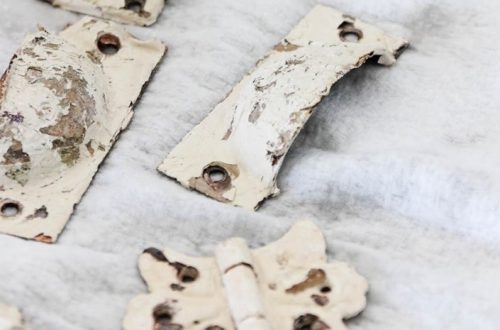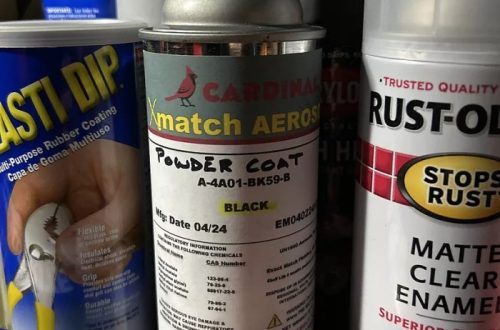Introduction to Salt Extraction
Extracting salt from a beaker of salt water is common and important. Salt, or sodium chloride, has vital roles in food and industry. Extracting it from salt water uses simple physical methods. This blog explores those methods, outlining each step.
First, we will look at the basic evaporation method. It’s a simple process where water is heated until it evaporates, leaving the salt behind.
Next, the blog will detail filtration. This separates salt from impurities. It’s a necessary step to achieve purer salt.
We will then cover distillation, a more complex process. Distillation involves heating to vaporize water, then cooling to collect pure water, separating it from the salt.
Following distillation, we have crystallization. This is how we obtain pure salt crystals. We let the salt solution form crystals as the water slowly evaporates.
Another method detailed is solar evaporation. It’s an eco-friendly way that uses sun’s energy to evaporate water, leaving salt behind.
We will also discuss decantation. This method involves gently pouring off liquid to separate it from solids.
Finally, we will touch on various uses of the extracted salt. Salt is used not just in kitchens, but in many everyday products and industrial applications.
Throughout, we will address ‘which physical method can be used for obtaining a sample of salt from a small beaker of salt water?’ Stay with us as we explore each technique’s steps and benefits.
Evaporation: The Basic Method
When considering which physical method can be used for obtaining a sample of salt from a small beaker of salt water, evaporation stands out for its simplicity and effectiveness.
Evaporation involves a clear-cut process of heating the salt water. As the water turns to vapor and escapes, the salt remains. Here’s how you can do it:

- Pour the salt water into a shallow pan: This increases the surface area for faster evaporation.
- Heat the pan gently: Use a low heat source to gradually raise the temperature.
- Wait for the water to evaporate: This could take several hours, depending on the water volume and heat intensity.
- Collect the salt: Once all the water has vanished, salt crystals will be visible on the pan’s bottom.
Using this method, the salt you collect should be free from most impurities found in the water. It is important to note that, while simple, evaporation does require a heat source and is dependent on environmental conditions like humidity which can affect the rate of evaporation. Furthermore, if the original salt water contained other soluble impurities, they could remain with the salt, so a further purification step, like filtration, might be necessary to achieve high purity levels.
Overall, evaporation is the primary technique for answering the question, ‘which physical method can be used for obtaining a sample of salt from a small beaker of salt water?’ due to its straightforward approach and ease of execution.
Filtration: Separating Salt from Impurities
Filtration is key to purify salt from unwanted elements. It follows evaporation in our process lineup. When you evaporate salt water, some impurities remain with the salt. Filtration can remove these effectively. Here’s a simple guide to filter salt:
- Prepare the filter: Use a paper or cloth as a barrier.
- Place the evaporated salt on the filter: Pour it over the filter material.
- Collect the filtered material: Impurities stay on the filter, while pure salt passes through.
- Dry the filtered salt: Allow it to air dry or apply gentle heat.
Filtration improves purity. It ensures you get rid of particles that evaporation might not remove. If the salt is for consumption, this step is crucial for safety and taste. For those wondering ‘which physical method can be used for obtaining a sample of salt from a small beaker of salt water?’ remember that filtration ensures quality. It’s easy and practical, fitting into domestic and industrial setups alike.
Distillation: A Step-by-Step Process
For obtaining a sample of salt from a small beaker of salt water, distillation is a precise method. Distillation requires a few more steps than evaporation. Here’s a breakdown:
- Set up the distillation apparatus: You need a heat source, a container for boiling, a condenser, and a receiving flask.
- Pour the salt water into the boiling flask: This is where the heating happens.
- Heat the water to boiling: The water will turn into steam, leaving the salt behind.
- Cool the vapor in the condenser: The steam will turn back into water, now in the receiving flask.
- Collect the distilled water: Pure water is now separated from the salt.
Using distillation answers the question of ‘which physical method can be used for obtaining a sample of salt from a small beaker of salt water?’ with accuracy. This process provides pure water while leaving the salt in the original container. It’s especially useful when you need to remove both the salt and other contaminants from water. Distillation does require specific equipment and more energy than simple evaporation, but it results in higher purity for both the salt and the water.

Crystallization: How to Obtain Pure Salt Crystals
Crystallization is a method that yields pure salt crystals. It’s an effective answer to ‘which physical method can be used for obtaining a sample of salt from a small beaker of salt water?’ Once evaporation or distillation has occurred, the remaining salt solution can form crystals. Here’s the crystallization process:
- Allow the concentrated salt solution to cool: After evaporation or distillation, let the solution cool slowly.
- Wait for salt crystals to form: As the solution cools, salt begins to crystallize. This might take several hours or days.
- Remove the crystals: Once they’re visible, gently scoop them out of the solution.
- Dry the salt crystals: Lay them out on a clean surface or paper to dry.
The crystals obtained through crystallization are usually very pure. This approach is suitable when high purity is essential. Unlike evaporation, this method can yield larger, well-formed salt crystals. Crystallization does not require additional heat, making it energy-efficient. It is important for those needing an effective method for obtaining a sample of salt from a small beaker of salt water.
Solar Evaporation: Utilizing Natural Energy
When seeking a method to obtain salt from salt water, solar evaporation is a standout choice. This method capitalizes on the sun’s natural energy to perform the evaporation process without artificial heat sources. The simplicity and eco-friendliness of solar evaporation make it both cost-effective and sustainable. Here are the steps involved:
- Spread the salt water in large, shallow ponds: These ponds are often called salterns. They maximize surface area for quicker evaporation.
- Let the sun and wind work: Solar energy and wind speed up water evaporation, leaving salt behind.
- Regularly check the process: Evaporation times can vary due to weather, so regular monitoring is important.
- Harvest the salt: Once the water is gone, you can collect the dried salt from the pond’s floor.
Solar evaporation is an ideal answer to ‘which physical method can be used for obtaining a sample of salt from a small beaker of salt water?’ when time is not a pressing concern and sunlight is ample. It’s particularly beneficial in regions with high temperatures and low rainfall. This method has been used historically all over the world and continues to be an efficient way to produce salt on a commercial scale. Plus, it avoids the energy costs associated with heating and promotes a more environmentally friendly approach to salt extraction.

Decantation: Removing Liquid from Solids
Decantation is yet another method that can help separate salt from salt water. This process involves a simple yet effective technique that here’s how it’s done:
- Let the salt water settle: After mixing or stirring, allow the water to sit undisturbed.
- Observe the sedimentation: Solids settle at the bottom because they are heavier than water.
- Carefully pour off the water: Angle the beaker and slowly pour out the clear water leaving solids behind.
- Repeat if necessary: For clearer separation, let the water settle again and decant.
Decantation works well for removing larger impurities that do not dissolve. It’s good for prepping salt water before evaporation or other methods you might choose. Using decantation together with filtration or evaporation ensures pure results. When considering which physical method can be used for obtaining a sample of salt from a small beaker of salt water, it’s important to note that decantation is chosen for its simplicity and passive nature—it requires no energy input, making it cost-effective. However, it’s not the most effective for removing all impurities, especially those dissolved in the water. Overall, decantation is an easy-to-apply step and integral to obtaining a sample of salt when dealing with sediments.
Uses of Extracted Salt in Everyday Life
After discussing how to extract salt using various methods, let’s explore its everyday uses. Salt goes beyond the dinner table. It shows up in many products we use daily. Here are some common uses of salt you might not know about:
Food seasoning:
Salt enhances flavor in dishes around the world. It’s a staple in kitchens.
Food preservation:
Salt dries out and preserves food by drawing out moisture. Think meats and fish.
Industrial manufacturing:
Salt is in plastics, paper, and cleaning products. It’s key in production processes.
Water treatment:
Salt helps in water softening and purification systems. It’s vital for clean water.
De-icing roads:
During winter, salt melts ice on roads. This keeps them safe for driving.
Healthcare:
Salt is used in saline solutions and oral rehydration therapy. It supports health recovery.
These uses show salt’s value in our lives. The question ‘which physical method can be used for obtaining a sample of salt from a small beaker of salt water?’ has practical importance. The extracted salt serves many purposes, from saving lives to making meals tasty.



